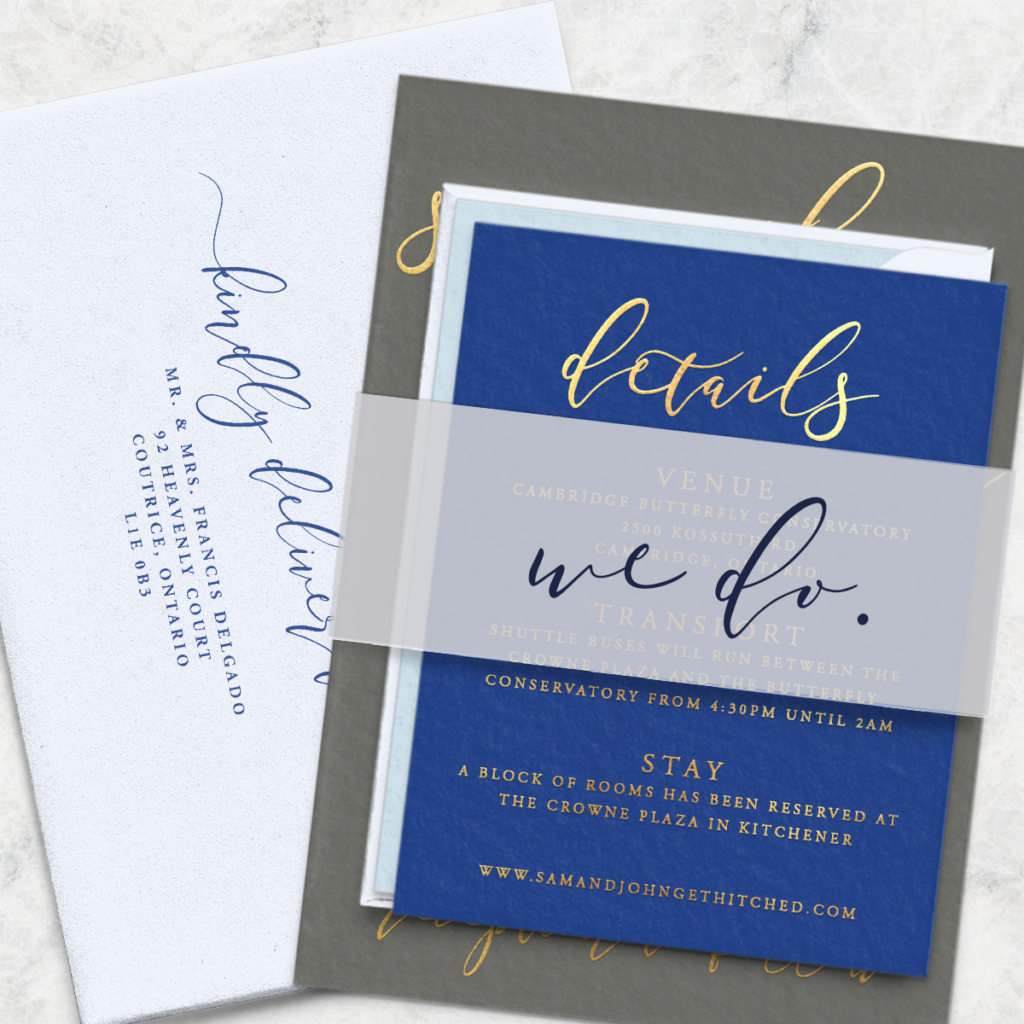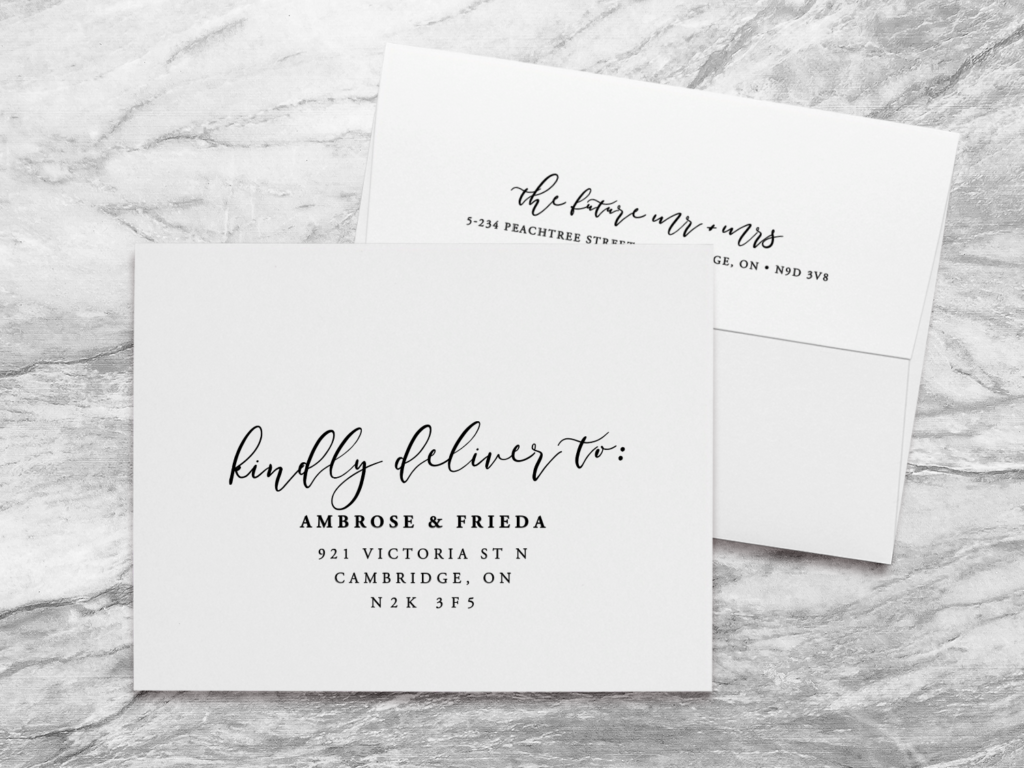
Alright, alright, I know. Building your wedding guest list is not much fun. In fact, it’s probably the absolute worst part of wedding planning. I mean, talk about drama, am I right? I know brides who’ve had so much trouble with their guest list they just gave up and eloped. But I won’t let that be you. I want to help make building your guest list actually easy — dare I say, it could even be FUN??
Well, maybe not fun, but at least as low-drama as possible. Here are my 10 best tips for building a wedding guest list you’ll actually like — and managing everyone’s requests.
If you’re looking for an easy way to put these tips into action, pick up the guest list workbook from my free resource library.
1. Know how many people your budget will allow.
The very first thing you’ll need to do is figure out how many people you can afford. This step starts with discussing the overall wedding budget and the kind of wedding you want to have. For example, if you only want to spend $10k total, but you want it to be lavish, you’re going to have a tiny guest list. It’s doable, but the list will have to be small. On the other hand, if you’ve got a budget in the $30-50k range and you want to go casual, you can probably invite just about every person you know.
So, start with your budget and the kind of wedding you want to have. If you really have no clue how much anything for your wedding will cost, I’d recommend getting a couple of quotes from venues you like before deciding on the number of guests. The last thing you want is to totally break your budget — that does not make for a happy start to your marriage.
2. Deal with your parents.
One of the biggest frustrations when it comes to your wedding guest list can be your parents. Some parents want to invite everyone and their mother to your wedding. Neighbors they know but you’ve never met, distant relatives you see once a decade, and of course, their friends you met at that one party but can’t even remember their names.
So, how do you deal with this? Well, start by dividing up your list. If your parents are helping to pay for the wedding, they have a right to invite people they want to be there. However, they don’t get to fill up your guest list with only their friends, leaving you with only your wedding party and a couple of friends. Usually, if one side is paying for the entire wedding, you would agree on a percentage of the list. Maybe for you that’s 20%, maybe it’s 50%. If both sides are splitting the cost, give them an equal share. If you’re paying for the wedding yourselves, well, you don’t have to give them anything, but 10% would be a nice gesture. Keep in mind that this division should be determined before you agree to accept money for the wedding.
For all of this to work well, you’ll want to stay true to your numbers. Be sure your family knows that you won’t budge on their allotment — some parents can get pushy with how many people they should or will invite. My trick is to be as empathetic and kind as possible. Try not to let it become a fight and instead just explain how it will be broken down and why your guest list can’t be any bigger.

3. Work out your priorities for your wedding guest list.
Now that you know about how many people you can put on your list, start discussing it with your partner. Figure out your priorities for your list, like the people or groups you must have and who you definitely don’t want.
Consider your priorities not just for specific people but for your atmosphere as well. If you’re looking for a raucous party, who would ensure that happens? Do you have a group of mid-distance relatives that really know how to party? Maybe they are bumped up on your list. If you’re going for a sophisticated black tie event, who would fit in best? Perhaps that one guy who gets into fights when he drinks is pushed down the list in favor of your neighbors who always know the perfect wine to bring to a dinner party.
This isn’t to say you should only invite certain types of people based on your event type, but more to help you focus in on who sits higher up on your list and who you might be willing to leave out. Obviously, your closest friends will be invited regardless.
4. Create rules about who’s invited.
When building your wedding guest list, it’s so easy to get carried away. You end up finding reasons to invite everyone. It’s the perfect excuse to reunite your elementary school friends and to bring your high school besties back together and for that long-awaited family reunion and for a neighborhood block party and to catch up with that volunteer group you went to Nicaragua with when you were 18. You and your partner and your parents and everyone else contributing to this list has a million people they want to invite.
Creating rules isn’t about being pushy or bossy — it’s about guiding your list in the right direction. You don’t want your wedding to be overrun by people you don’t know, leaving no room for your closest friends. You don’t want to spend money on people who will bring down your vibe on the day. And you certainly don’t want the day to be full of awkward moments running into people whose names you don’t know.
So, before you start waxing nostalgic and getting emotional about who you want to invite (trust me, I’ve been there!) set out a few ground rules for who can be invited. Here are a couple of ideas:
- If you’ve never spoken to them, they can’t come.
- If it’s been X years, they’re off the list.
- Plus ones for people who have been together for X years. Or based on their status (married, engaged, living together, etc).
- No children under 12 allowed (or under 18, 21, whatever works for your event).
These are just a few examples of the rules you could set. Be sure that this is a collaborative effort, though. You don’t want to just create a list and present it to your partner and parents. If everyone can agree on the rules, they’re much more likely to follow them and respect your wishes.

5. Split your wedding guest list.
Some couples are connected at the hip and have identical friend groups; other couples barely ever see their partner’s friends. No judgment if you are on either side or somewhere in the middle. However, having distinct friend groups can make it tough to come to mutual decisions about who will be on your wedding guest list. If this is you, you might want to split the list with your partner just like you did with your parents. This way, everyone has the opportunity to invite their closest friends without being overruled by the other person.
One nice thing about this method is that you can divide it up however you like. Perhaps you have a bunch of mutual friends and then also distinct other groups. Well, split the list in three — one part for mutual, one part for your guests, one part for your partner’s. If it works for you as a pair, you may also want to allow a certain number of vetoes — just make sure it’s all done fairly and evenly so no one feels overruled or undermined.
Note that fair does not always mean equal. My husband doesn’t have much family and has a few close friends, while my family is much bigger, as is my friend group. So, our guest list was about 70% my people and 30% his. It might sound selfish of me, but we decided on the list together and he was happy with it. In fact, I pushed him to invite more people than were on his original list. So that just goes to show that splitting the list is based on what works for you as a couple and as individuals.
6. Rank your people.
Truthfully, I hate this part. The thought of ranking my family and friends just seems so impersonal and kind of mean. I don’t like it, but I’m going to encourage you to do it anyway — and here’s why. The reality is that you can’t invite everyone. You will have to make a few tough decisions and even get a little cutthroat about it. So, having a ranked list will help you make necessary cuts.
To make it easier on you, try not to think about it as ranking your friends and family members by how much you like them. Instead, it’s about your day and your priorities. The rank is simply to help you decide between people. If you could only invite one person in a certain friend group, who would it be? If you could only bring 10 friends from college, which ones would make you feel the best? So while the ranking system might seem mean, it’s not. It’s just an easy way to group and classify potential guests.
7. Remember your supporters.
There’s one etiquette rule I think is super important when it comes to your wedding guest list: it’s totally uncool to not invite everyone who attended your engagement party and bridal shower. Basically, this means anyone who attended either or both of these parties should be at the TOP of your priority list.
It might seem silly or petty, but remembering who your supporters are and inviting them to celebrate with you is not only proper, but respectful. Anyone who’s taken the time out to attend an event celebrating your upcoming marriage — especially if they’ve also gotten you a gift — should be respected and celebrated. This means you might want to be careful about who you invite to your parties leading up to the wedding!

8. Have an A-list and a B-list.
So, no matter how perfect your guest list ends up being, it’s inevitable that some people won’t be able to make it. In fact, you should expect about 17% of your list to decline their invitation. So, what do you do? Well, if you want to risk it, you just send 17% more invitations than you have space for — but that means you might end up with 17% more guests than you’ve budgeted for. Or what happens if you end up with a 30% decline rate? (Maybe your wedding weekend is super popular!) What do you do with those empty places?
To solve this problem, you can divide your guest list — this is where the ranking system can be super helpful. Send invitations to the approximate number of people you can accommodate. This is the top of your ranked list — your A-list. When you get responses from these potential guests, you’ll know about how many more you can accommodate and you send invites to the next people on your ranked list — your B-list. This helps ensure you fill all the seats you have without running the risk of over-inviting in the first place.
Of course, with this system you’ve got to be careful. Be sure that you don’t send out invitations with an RSVP date that’s already passed — that’s a sure way to tell people they weren’t on you’re A-list!
9. Write names on response cards.
Sometimes people don’t really get it. You spend time and energy figuring out your wedding guest list. You include (and exclude) people for a reason, but not everyone understands that. And better yet, some people don’t understand addressing etiquette and may be confused as to who’s actually invited. What ends up happening is that even though you only invite one person, they RSVP for two. Or, if you invite the parents in a family, they think that means their kids are invited, too.
To avoid this problem and make it super clear exactly who is invited (in addition to specifically addressing envelopes to people), you can write the names of those invited on the RSVP card. You already know that the little line in the middle of the card (usually preceded by an M) is where guests write their names. Instead of leaving it up to them to tell you who is RSVPing, you can make it super clear.
When you do this, you avoid issues of bad etiquette and extra plus ones, but you also never end up getting back blank RSVP cards. That’s a huge bonus and saves you a ton of time tracking people down — and of course awkward conversations about who’s not invited! To me, it’s a win-win.

10. Plan a response for last-minute people.
And last but certainly not least, you’ll want to figure out what to say to people who ask if they can come at the last minute. Once your date is on the horizon, people will start asking about it — and you’ll be tempted to invite everyone you see. Prepare yourself by coming up with a response in advance, rather than having to come up with something on the spot.
Here’s one way you could put it:
Thank you so much! We would love to have you come but the venue doesn’t allow more guests than we already have committed to. It totally sucks — I wish we could have everyone there, but it’s out of our control. We would love to have you come over for dinner and catch up once we get back from our honeymoon.
Whether you use this exact phrasing or not, the important thing is to have it planned in advance so you don’t inadvertently invite a bunch of people at the last minute and blow all the work you’ve done on your guest list.
At the end of the day, the point in all of this is to ensure you have the kind of wedding you’re dreaming of while avoiding the drama that comes with fighting over a guest list. It’s supposed to make it easier! So, if there’s someone you can’t bear to not invite, make room for them. Just don’t do it for everyone you know. Follow your rules, stick to your numbers, and focus on those priorities. In doing that, you’ll make it much easier on yourself, your partner, and your parents to build your guest list and have the wedding that is perfect for you as a pair and new family.
I know all of this can be overwhelming, so I’ve created a workbook to help you through it. You can grab my free guest list workbook now, so your guest list process goes smoothly — and to stay sane through it all! And of course, once that’s done you’ll be set to pick up your wedding invitations — seriously, this is the best part!